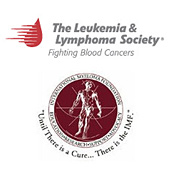

Benzene and Acute Lymphocytic Leukemia
Acute Lymphocytic Leukemia (ALL) is a type of leukemia generally characterized as a malignancy of the lymphocytes with an acute onset and rapid progression of disease. There are actually two forms of the disease, one which occurs in adults and one which occurs in children. ALL accounts for about 90% of leukemia in children, but only about 20% of leukemia in adults. The disease is sometimes called Acute Lymphoid Leukemia or Acute Lymphoblastic Leukemia.
Although it is generally accepted by the medical and scientific communities that benzene causes Acute Myelogenous Leukemia (AML), some physicians/scientists (typically those affiliated with the petroleum industry) argue that the available literature does not support a causal association between benzene and other forms of leukemia, including ALL. However, a fair review of the literature shows that exposure to benzene can indeed cause ALL in humans.
A number of studies and reviews of benzene and hematological malignancies have been published in recent years. Foremost among these is a review by David A. Savitz and Kurtis W. Andrews, epidemiologists at the University of North Carolina School of Public Health, who studied the available literature under a grant of the National Institute of Environmental Health Sciences. In their review article, Savitz and Andrews observe: “The perception that the association between benzene and AML dominates the overall pattern of epidemiologic study results is not supported by our review.” These authors conclude: “The epidemiologic evidence linking benzene to leukemia in the aggregate, as well as acute and chronic lymphocytic and myeloid leukemia, is no less persuasive than that for AML alone.” Savitz, D., and Andrews, K., “Review of Epidemiologic Evidence on Benzene and Lymphatic and Hematopoietic Cancers,” Am. J. Ind. Health 31:287-295 (1997).
Another researcher who has reviewed the literature to determine causal associations between benzene and specific cell subtypes of leukemia is Dr. Peter Infante, formerly Director of the Office of Standards Review of the Occupational Safety and Health Administration and the principal investigator of the first epidemiologic study (the Pliofilm cohort study) that established the causal association between benzene and human leukemia. In his review of the literature, Dr. Infante observes that “[i]n terms of epidemiologic studies, the report by Yin et al. of 28,460 Chinese workers exposed to benzene is the only study that may have enough cases (N=30) whereby one can begin to evaluate the relative risk for specific types of leukemia related to benzene exposure, though the numbers are still small.” Dr. Infante noted that Yin found 3 cases of ALL among the 30 leukemias in the cohort studied. Dr. Infante calculated a cell-type specific standard mortality ratio (SMR) for the various types of leukemia diagnosed in the Chinese cohort. The cell-type specific SMR for ALL was 1.96 or roughly twice that expected from the general population rates for ALL in China. Infante, P. F., “Benzene and Leukemia: Cell Types, Latency and Amount of Exposure Associated with Leukemia,” Advances in Occup. Med. and Rehab. 1(2):107-120 (1995).
Dr. Infante’s conclusion is consistent with a number of case series of benzene-exposed workers. In a study by Muzaffer Aksoy of Turkish shoe workers occupationally exposed to benzene, 3 of 26 (11.5%) of the exposed workers who developed leukemia had ALL. Aksoy, M., et al., “Leukemia in Shoe-Workers Exposed Chronically to Benzene,” Blood 44(6):837-841 (1974).
In a study of shoe workers occupationally exposed to benzene in France, 2 of 23 (8.7%) of the exposed workers who developed leukemia were diagnosed with ALL. Goguel, A., “Les Leucemies Benzeniques de la Region Parisienne entre 1950 et 1965,” [“Benzene Leukemias in the Paris Region From 1950 to 1976”], Nouv. Rev. Fr. D’Hemat. 7(5):465-480.
Thus, the medical and scientific literature does support a causal association between exposure to benzene and the development of ALL in humans. Based on the available literature, this particular subtype of leukemia comprises approximately 10% of benzene-induced leukemia in humans.



